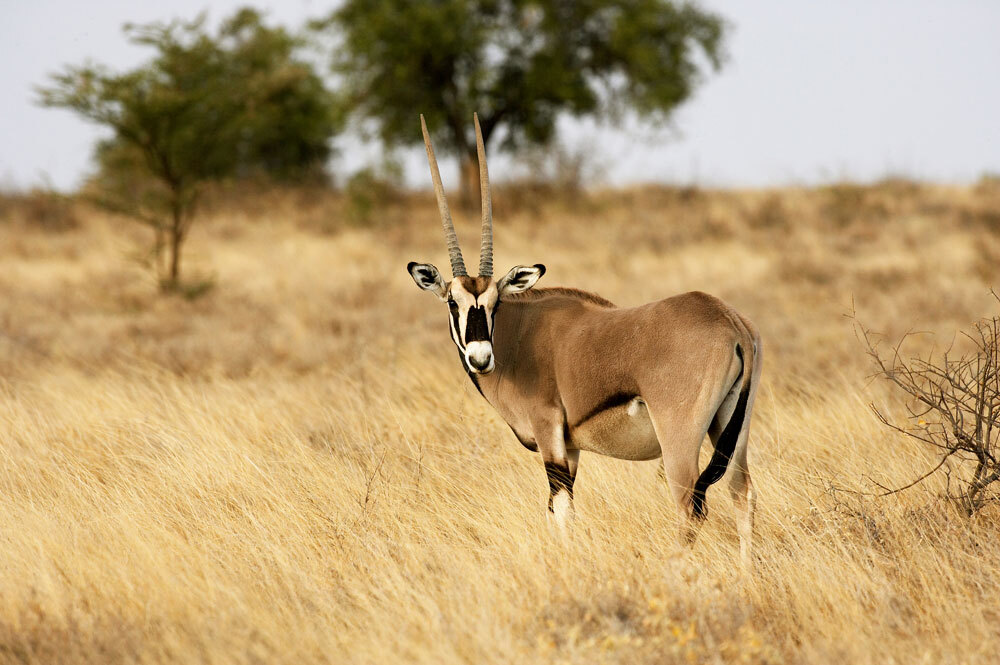Oryx—or gemsbok—are large, desert‑adapted antelope distinguished by their spear‑like horns, bold black‑and‑white facial markings and light grey or fawn coats. Kalahari gemsbok (Oryx gazella) males weigh 230–295 kg and both sexes carry long horns; females’ horns are slimmer and often longer than those of males. The East African oryx or beisa (Oryx beisa) has a grey coat with black stripes along the flanks and head, and two subspecies: common beisa and fringe‑eared oryx. Golden gemsbok are colour variants with a sandy golden coat bred on private ranches; they appeal to collectors but are genetically the same species as the common gemsbok.

Gemsbok hunts take place in arid bushveld, semi‑desert and Kalahari dunes. Hunters use vehicles to crest dunes or ridges and glass the open terrain for herds of 10–40 animals, then stalk on foot, often crawling to close the distance. In thicker bush, trackers follow spoor along game trails before slipping through cover for a shot; open country usually demands longer shots out to 200 m, so rifles in the .30‑06 to .338 Magnum class are recommended. Fringe‑eared oryx hunts in Tanzania and Kenya similarly employ spot‑and‑stalk methods; these antelope travel in small herds, are most active early and late in the day, and require accurate shooting.
The common beisa oryx has a total population of 11,000–13,000 mature individuals and is classified as Endangered by the IUCN; numbers are decreasing due to hunting and competition with livestock. East African oryx raise their body temperature to minimise perspiration and can survive without drinking for long periods. Well‑managed hunting programmes in Namibia, Botswana and South Africa provide revenue for conservation and encourage landowners to maintain arid rangelands. Because golden gemsbok are simply colour variants, major record books do not recognise them as separate trophies, though some outfitters offer hunts for their novelty.
Oryx are gregarious, nomadic antelope that follow seasonal rains and feed on grasses, herbs, succulents and wild melons; they rarely need to drink because they obtain moisture from their food. The fringe‑eared oryx is immediately recognisable by the long tufts of black hair on its ears and can weigh up to 210 kg; both sexes have horns up to 80 cm long. When threatened, oryx stand their ground and use their horns to defend themselves—lions have been fatally gored. Bowhunters sometimes take gemsbok from blinds over salt licks, but because these antelope are water‑independent, they may be difficult to pattern.
Oryx/Gemsbok can be found in the following location:
Oryx/Gemsbok has the following variations:
- Kalahari Gemsbok
- Beisa Oryx
- Fringe‑Eared Oryx
- Golden Gemsbok
Start Your Adventure



